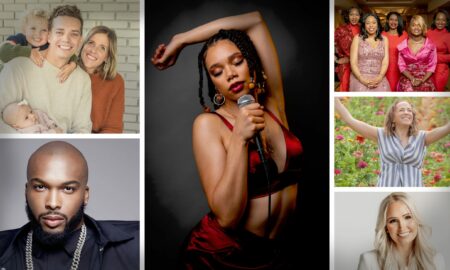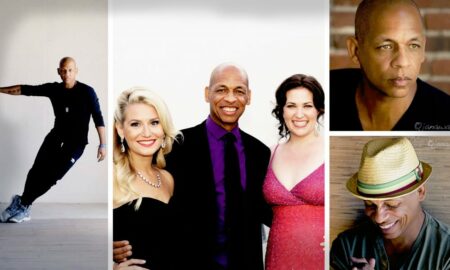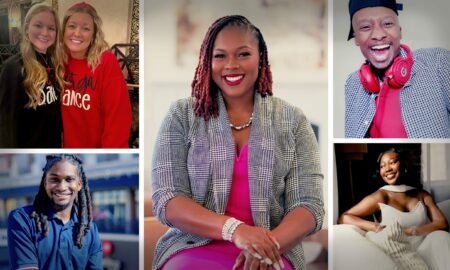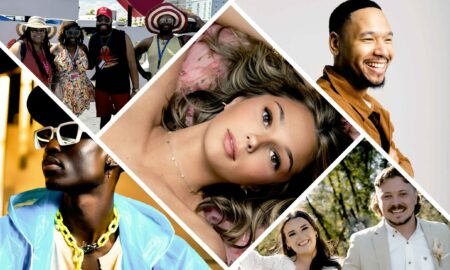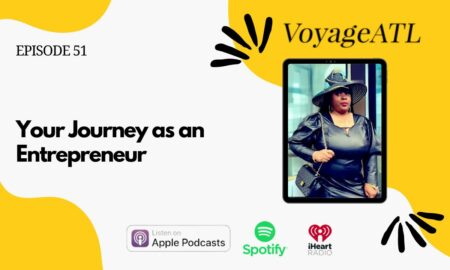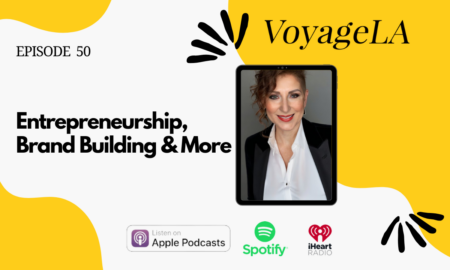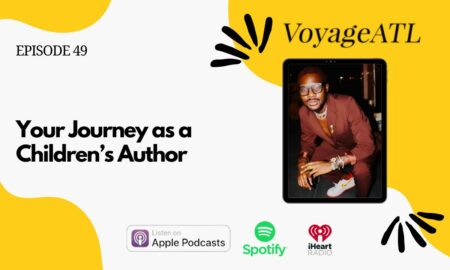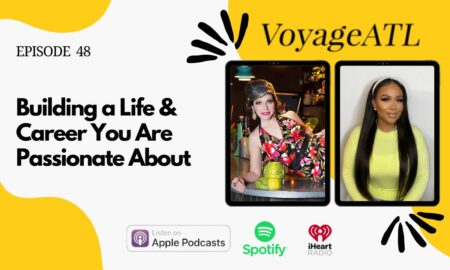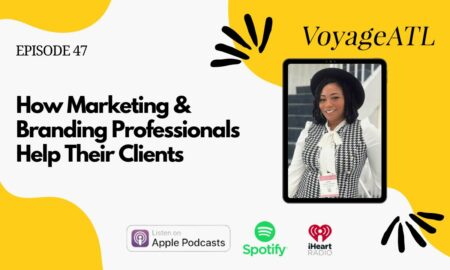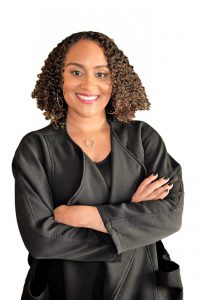
Today we’d like to introduce you to Gholdy Muhammad.
Gholdy, let’s start with your story. We’d love to hear how you got started and how the journey has been so far.
My story starts in Gary, Indiana where I was born and raised. I spent the earlier years of my life there and attended schools where I had many black teachers who looked like me and who loved me. They taught me things that nurtured my thinking but also nurtured an understanding and knowledge of who I am. I had teachers who would say my full name, Gholnecsar. They did not ask me for a nickname or laugh at my name. Nor did they make me feel uncomfortable because I had a different name. I experienced the latter when I transferred to a school in a white suburb. While in Gary, Indiana, I had teachers who made me feel smart and made me feel like I was enough in this world. I had teachers who inspired me to want to be a teacher. And for that, I am thankful.
Later, I became a classroom teacher. I taught social studies, reading and English language arts to sixth graders in a town that was adjacent to East Saint Louis. After teaching for a number of years, I became a school district administrator responsible for K-12 curriculum and instruction. While within these roles, I learned that curriculum, instruction, learning standards and the teacher evaluation were largely broken. These elements were not responsive to the histories and the lives of our black and brown students—especially our black students who have a history steeped in pain and oppression. I wanted to be at a level of greater influence and to do that, I knew I had to cultivate my own knowledge. I knew I had to learn more about education, history and blackness. So, I decided to go to graduate school to study literacy because I felt literacy was the foundation to success, achievement, joy and personal development for a child. I studied toward my PhD in literacy, language and culture at the University of Illinois at Chicago (UIC).
While at UIC, I took a class that focused on the historical and archeological understandings of literacy development for African American males. This course was taught by my advisor, Alfred Tatum. In the class, each doctoral student had to select a topic of interest that related to African American male literacy development. Because I was interested in literacy development in collaborative spaces like book clubs and writing clubs, I chose to study the history of African American literary societies in the 19th century. Through my study and unearthing this part of history, I read hundreds of historical documents. I found that their learning back then was more advanced than what we do in schools today. And from studying the history of black historical excellence, I came to a teaching model that can be used to advance the academic and personal growth of students across K-12 classrooms and across content areas like math, science, English language arts and social studies. This model is more advanced and more intellectually invigorating educators do in schools across the nation today.
I heard a colleague tell me, “The model is genius.” In thinking about the word, genius, I thought how much folks don’t our black students’ stories with genius. For example, when asking teachers to tell me about their Black students, some would give me deficit statements that related to what they couldn’t do or what the system has caused—a system that was never designed to nurture, recognize and cultivate their genius of black youth. So, I wanted the world to know about a black historical excellence as a model for all classrooms with all youth. This model collectively teaches identity, skills, intellect and criticality. A model that is anti-racist and teaches all students what they need to know. It is not related to European or whiteness. We have used European models of education for too long and we still don’t have populations of black and brown kids who are excelling in ways to meet their potential. Black excellence was not something I learned in my teacher education program during undergraduate studies. I didn’t learn about people like WEB DuBois, Carter G. Woodson, Mary McLeod Bethune and Anna Julia Cooper.
After graduate school, I took a job as an assistant professor at Georgia State University and this is now my seventh year at the university and each year I have been focused on this model of historical excellence. The model teaches four different standards for learning. The first standard connects instruction to our children’s multiple and complex “identities” while helping them to learn about the identities of others who look different than them. The second standard for learning is “skills” where teachers ask, what skills am I teaching for my content area? “Intellectualism” this is third goal which teaches our kids to become smarter about new people, places, things, ideals and concepts. And the fourth goal of the model is “criticality” which is teaching students to understand power equity and anti-oppression. Collectively these learning standards nurture a child’s holistic development in achievement.
I use this model for my teaching at Georgia State and as I work with educators across the country. I used this model as the nucleus to write my book, “Cultivating Genius: An Equity Model for Culturally and Historically Responsive Literacy. Thankfully the book is selling really well and teachers across the nation and world like they have a practical model that they can use immediately in their classroom.
So, my story is connected unearthing black history and connect it to ways we can make schools and education better. My story responds to the question, how can I change or advance the teaching and leadership practices of educators? I try to use my understanding and my knowledge to make the world better through education. And while anti-racism work is heavy and exhausting, I try to stay in it. I try to remember why I wanted to be a teacher and a school leader. I try to remember why I wanted to be a college professor and a consultant of education. And I remember the potential, joy, and the light of every child. Helping youth to cultivate and recognize their beauty and genius is what keeps me in this work.
Overall, has it been relatively smooth? If not, what were some of the struggles along the way?
Nothing great is ever easy. It hasn’t been a smooth road. It has taken many tears, many rejections and constancy. Whenever you work in an institution like a university or school and if you are a person of color whose beliefs are different from the workings of the institution, there is struggle. I have experienced discrimination related to my race, gender, religion and even my name. I have had colleagues and teachers say racist things to me. I have struggled to get to the right words to express how I feel. I have experienced being around people who didn’t want for me what they wanted for themselves. But asking the question, “to what end?” every day, reminds me of my purpose. To deny any of the gifts I have been given is to deny my purpose.
HILL Pedagogies – what should we know? What do you do best? What sets you apart from the competition?
HILL Pedagogies is my company that focuses on equity and educational excellence. It is called “HILL” because our work collectively responds to individual’s multiple histories, identities, literacies and liberation. I specialize in educational and equity consulting. I work with teachers, school leaders and business professionals who desire to advance in their understanding or practices with the goals of access, inclusion and equity. What sets me and the work apart is that I take a historical lens of Black excellence as the way forward for providing professional learning to others. And I approach everything with a lens of equity, which practices what I preach. I am most proud of how well we are doing to make changes across school. Many districts have adopted my model for teaching and learning. I get so many emails from our nation’s teachers on how the work has changed their minds, hearts and practices.
What is “success” or “successful” for you?
Success is when I can look in the mirror and have done work that will please my Lord and my parents. If at the end of the day, my thinking and actions were righteous to advance the life’s outcomes of Black children and of other children as well. The number of contracts, awards, book sells, or requests don’t define success exactly but it is nice to know the work is recognized and honored.
Contact Info:
- Address: 216 Semel Circle NW #344
Atlanta, GA 30309 - Website: hillpedagogies.com
- Phone: 6189802361
- Email: hillpedagogies@gmail.com
- Instagram: https://www.instagram.com/gholdy.m/?hl=en
- Facebook: https://www.facebook.com/gholdy.muhammad
- Twitter: https://twitter.com/GholdyM





 Image Credit:
Image Credit:
Black girls read photo (Claire Miller of GSU) Headshot in black jacket (Tiffany Stubbs)
Suggest a story: VoyageATL is built on recommendations from the community; it’s how we uncover hidden gems, so if you or someone you know deserves recognition please let us know here.

